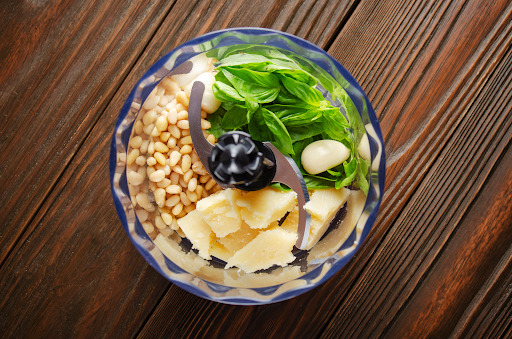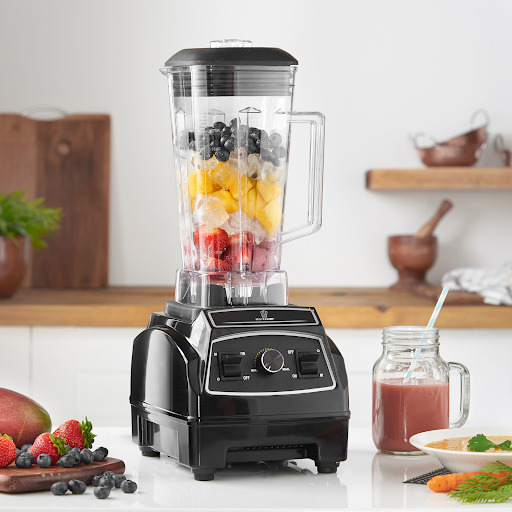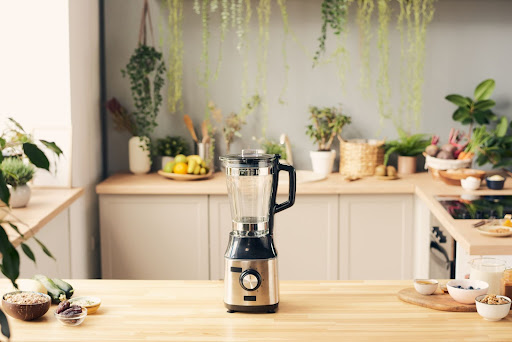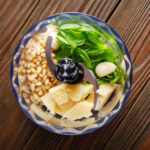Are you new to the kitchen scene and wondering which kitchen gadget to pick? Well, you’re in the right place! We’re here to talk about two handy kitchen tools: food processors and blenders. These nifty devices have been kitchen staples for a while, and they both have that familiar jar shape with blades at the bottom. But here’s the thing – they’re not quite the same, and each tool is designed for different purposes.
So, if you’re scratching your head trying to decide which one’s right for you, don’t worry! We’ve got your back. In this blog, we’ll break down the differences between food processors and blenders and help you figure out which one suits your needs best. Let’s get started!
How Do Food Processors Work?

A food processor is made up of three main parts: a motor base, a work bowl with a lid and a feed tube, and various interchangeable flat S-shaped blades. The motor is what gives the processor its power, enabling the blades or discs to spin at high speeds. The work bowl is where you put your ingredients, and it acts as the container for processing.
To use the food processor, you need to place your ingredients in the food processor bowl or feed them through the feed tube, then press the control button to start the motor. Depending on the attachment you’ve chosen, the spinning blades will either chop, slice, dice, or shred the ingredients. The end result is finely processed or evenly chopped food, making tasks like cutting veggies or making dough incredibly easy.
What Can You Make in A Food Processor?
A food processor can help you make a wide range of dishes and recipes. You can use them to:
- Chop vegetables for salads or stir-fries
- Make dough for pizza, pie, or bread
- Grind nuts and seeds to make nut butter or flour
- Shred cheese or grate vegetables
- Puree fruits and vegetables for soups or baby food
- Make delicious sauces and dips like pesto, salsa, hummus, or guacamole
- Pulse chunks of meat for burgers, meatballs, or sausage
- Blend batters for cookies, cakes, and muffins
How Do Blenders Work?
Blenders are designed primarily for blending and mixing liquids and soft ingredients. Like food processors, they consist of three main parts: a motor, a pitcher-shaped blender jar, and blades at the bottom, which are positioned differently compared to food processors. They also come in various different designs, such as immersion blenders or personal blenders, which are exclusively intended for making sauces.
When you switch the device on, the blender blades spin rapidly, creating a whirlpool effect that pulls the ingredients down toward them. This process effectively chops, blends, and purees the ingredients, resulting in a smooth and consistent mixture.
What Can You Make in a Blender?

Blenders are great for creating smooth and uniform mixtures. You can use them to:
- Make smoothies and shakes with fruits, yogurt, and liquids
- Blend soups and sauces for a silky texture
- Crush ice for frozen drinks
- Mix batters for pancakes, waffles, and muffins
- Prepare purees, such as baby food or fruit coulis
- Create frozen desserts like sorbets
What’s the Difference Between a Food Processor and a Blender?
Now that we’ve covered how these appliances work and what you can create with them, let’s explore the key differences between food processors and blenders:
1) Blade Design
Most food processors come with various blades and attachments, including slicing discs, chopping blades, shredding discs, and dough blades. They usually have a S-shaped design that lets you control how finely your food gets chopped.
Blenders, on the other hand, typically have a single set of sharp, rotating blades with multiple prongs. Unlike food processors, these blades point upwards and create a swirling motion, making them great for mixing liquids and soft ingredients.
2) Jar Design
Food processors have wide and shallow bowls, often equipped with a feeding tube for adding ingredients during processing. The broad shape makes it easy to work with solid ingredients.
Blenders, on the other hand, come with tall, narrow pitchers featuring a conical shape and a tight-fitting lid. This design is perfect for creating the swirling motion needed for blending but might not be the best choice for chopping or kneading dough.
3) Size and Capacity
Food processors come in various sizes, from small mini-processors to large-capacity models. They are generally better suited for larger quantities of food preparation, unlike blenders that have limited capacity and size options.
Can You Use Both Tools Interchangeably?
No, both blenders and food processors have different purposes in the kitchen. However, there are some cases where you can use them interchangeably depending on what you’re preparing.
Consider the following:
When to Use a Food Processor:
- For Dry or Dense Ingredients: The food processor can handle tasks that require more force and less liquid. This includes chopping vegetables, grinding nuts, or making breadcrumbs.
- For Dough and Thick Mixtures: Because of its sturdy base and powerful motor, a food processor can mix heavy dough or combine thick ingredients with ease.
When to Use a Blender:
- For Liquids and Soft Ingredients: A blender is your best bet for liquid recipes. Its blades and pitcher are designed to create smooth, even textures.
- For Crushing Ice and Frozen Ingredients: Blenders are usually better at crushing ice and handling frozen fruits or vegetables, thanks to their sharp blades and high-speed settings.
What About the Exceptions?
Occasionally, you might find that either appliance can do a small part of the other’s job. For example, a high-powered blender might be capable of processing soft nuts or making chunky salsa. Likewise, some food processors come with attachments that can handle blending to some extent.
But remember, they’re not perfect substitutes. A food processor won’t give you the silky texture you want for creamy soups, and blenders won’t give you the precise chopping or kneading you might need for certain recipes.
Why It’s Best to Use the Right Tool for the Right Job
Using the right tool for the right job is essential for several important reasons:
1) Maximizing Efficiency
Both a food processor and blender are designed to perform their specific tasks quickly and effortlessly. When used correctly, they not only save you time but also ensure you make the most of their capabilities. Imagine trying to chop nuts in a blender – you’d likely end up with uneven pieces.
2) Preventing Wear and Tear
Misusing these appliances can lead to wear and tear that might not be covered by the warranty. Blenders, for example, are not designed for tasks like mixing dough, which can strain their motors. Similarly, trying to puree liquids in a food processor may cause leaks or other damage.
3) Ensuring Safety
Each appliance comes equipped with safety features designed for its intended use. Using them for other purposes can pose risks, including the possibility of a blade breaking or a motor overheating. Therefore, sticking to their designated functions is important to ensure safe operation.
Factors to Consider When Buying a Blender or Food Processor

When you’re in the market for a kitchen appliance like a food processor or a blender, it’s important to consider several factors to ensure that you choose the right tool for your specific needs. Here are some key factors to keep in mind:
1) Motor Power
Begin by checking the motor power of the appliance. A powerful motor can handle tougher tasks and run for longer periods without overheating. For blenders, ensure there’s enough power to crush ice and blend frozen fruits. In the case of food processors, look for a motor capable of handling dense dough and hard vegetables.
2) Blade Quality
Blades play a vital role in both blenders and food processors. They must be sharp, durable, and designed for their respective functions. The best food processor and blender models always feature stainless steel blades due to their resistance to rust.
3) Accessories and Attachments
Consider whether the appliance comes with various attachments and accessories. Food processors may include different food processor lids, blades, and disks for slicing, grating, and shredding. Blenders might include additional cups and lids for added convenience, especially for on-the-go use. Take into account which food processor attachment or blender attachment would serve your needs and whether they’re included or sold separately.
Summary
In conclusion, food processors and blenders are not the same tools; they each excel in specific tasks. To make the most of your kitchen endeavors, consider having both appliances on hand. This way, you can effortlessly tackle a wide range of recipes, from creamy smoothies to finely chopped veggies and beyond.
And if you’re looking for a high-performance blender to improve your cooking skills, check out the MisterChef Professional Blender. With its powerful motor and precision engineering, our blender is designed to help you achieve impeccable results for all your blending requirements. Shop with us today.






